Your guide to fine dining – utensils 101
by The 101 Staff / March 8, 2018
Picture this : You arrive at the restaurant looking sharp, ready to wine and dine. A host assists you to your table where your friends or special someone are waiting. After a while your food arrives and you’re ready to dive in. One problem though, you don’t know what utensil use. Yikes! No one wants to be embarrassed so step up your etiquette game with fine dining utensils 101.
Utensils Placement
Generally, there are 3 forks on the left and 3 knives on the right. Sometimes additional utensils such as a tea spoon, soup spoon, and an oyster fork are placed beside the knives. Just above your plate are the dessert spoon and fork. To your left, placed above the bread dish is a butter knife.
It is believed that when it comes to fine dining utensils you work your way from the outside to the inside (the ones closest to your plate). However, this is not always the case. Utensil arrangement may change depending on which meal is served first, find out the purpose of each utensil in the list below.
The Dinner Fork
The dinner fork is the longest of the forks. Depending on the restaurant, it’s either placed closest to your plate or in the middle of three forks. The dinner fork is what you should use for the main dish or when eating meat.

The Fish Fork
The fish fork has three or four tines, with the left tine a bit larger than the the other tines to help you remove fish bones and make eating easier. If you’re looking for the fish fork, look for the smallest fork on your left.

The Salad Fork
The salad fork has broader and flatter tines compared to a dinner fork to help you cut thick vegetables.
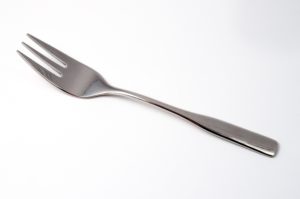
The Oyster Fork
Sometimes referred to as a seafood fork or a cocktail fork, the oyster fork is used for eating shellfish or other seafood such as lobster and shrimp. Unlike other forks which are placed on the left, this one is on the right side of the plate.

The Dinner Knife
Much like the dinner fork, the dinner knife is also the longest. Use it to cut meat served as the main course. You can also use this to push and move food around your plate.
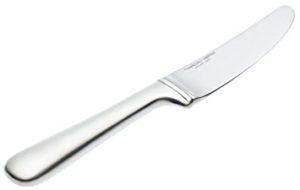
The Fish Knife
This specially shaped knife is wide and has a dull edge which allows it to help you separate the fish meat from the skin. Along with the fish fork, this utensil is helpful when deboning fish-based dishes.

The Salad Knife
Some vegetable are too thick that a salad fork is not enough to cut through it, in this case you may use a salad knife. Salad knives are placed right beside the fish knife.
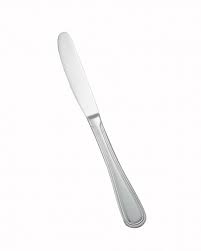
The Butter Knife
This knife is easy to spot because it is placed diagonally on top of a butter. Not all fine dinning restaurants have butter knives, but in case there is one you may to use it to spread butter.
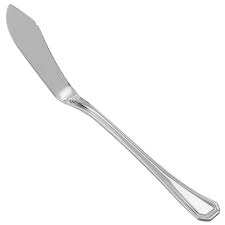
The Tea Spoon
The tea spoon are small spoons that can be found right beside the set of knives. As the name suggests, it is designed for stirring tea (sometimes coffee, if there’s no coffee spoon provided).
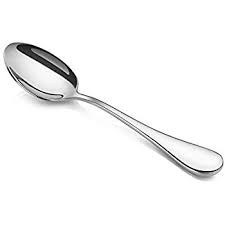
The Soup Spoon
The soup spoon is a large spoon with a rounded end. It is placed on the right, farthest from your plate just right beside the tea spoon.
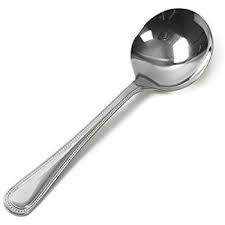
The Dessert Fork and Spoon
There’s always room for dessert, and in fine dining there is a special set of utensils made for dessert consumption. If there’s no dessert spoon and fork placed just above your plate, expect the waiter or waitress to give you a pair when dessert is served.
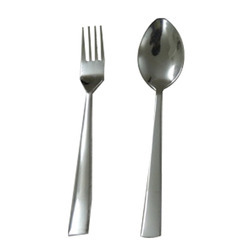
Trying to remember which is which is a bit tricky because placement varies depending on the restaurant and the arrangement style they follow. Pro tip: Don’t just focus on the placement, pay attention to the utensil size as well.
Also consider how you handle your fork and knife. There are two ways you can do it: the American way or the European way. Americans have the fork in the left hand and the knife in the right hand when cutting food. When done cutting, they put the knife down, puts the fork in their right hand and starts to eat. Europeans, on the other hand, do not switch. They keep it simple by keeping the fork in the left hand.
When you’re done eating don’t just place your utensils in any way you want. Remember, fine dining has rules and nuances. Check out the different fork and knife positions below.
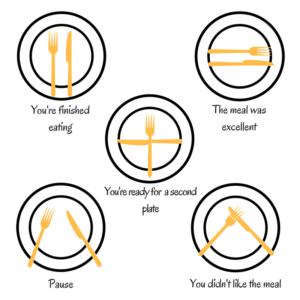
Last but no the least, if in doubt just observe and follow. You may not remember everything written in this article, so in case you find yourself confused and overwhelmed with the amount of silverware in front of you just relax, take a look around, and copy what others are doing. Happy Dining! Do you have other tips on fine dining utensils and how to use them? Let us know on the comment section below!



